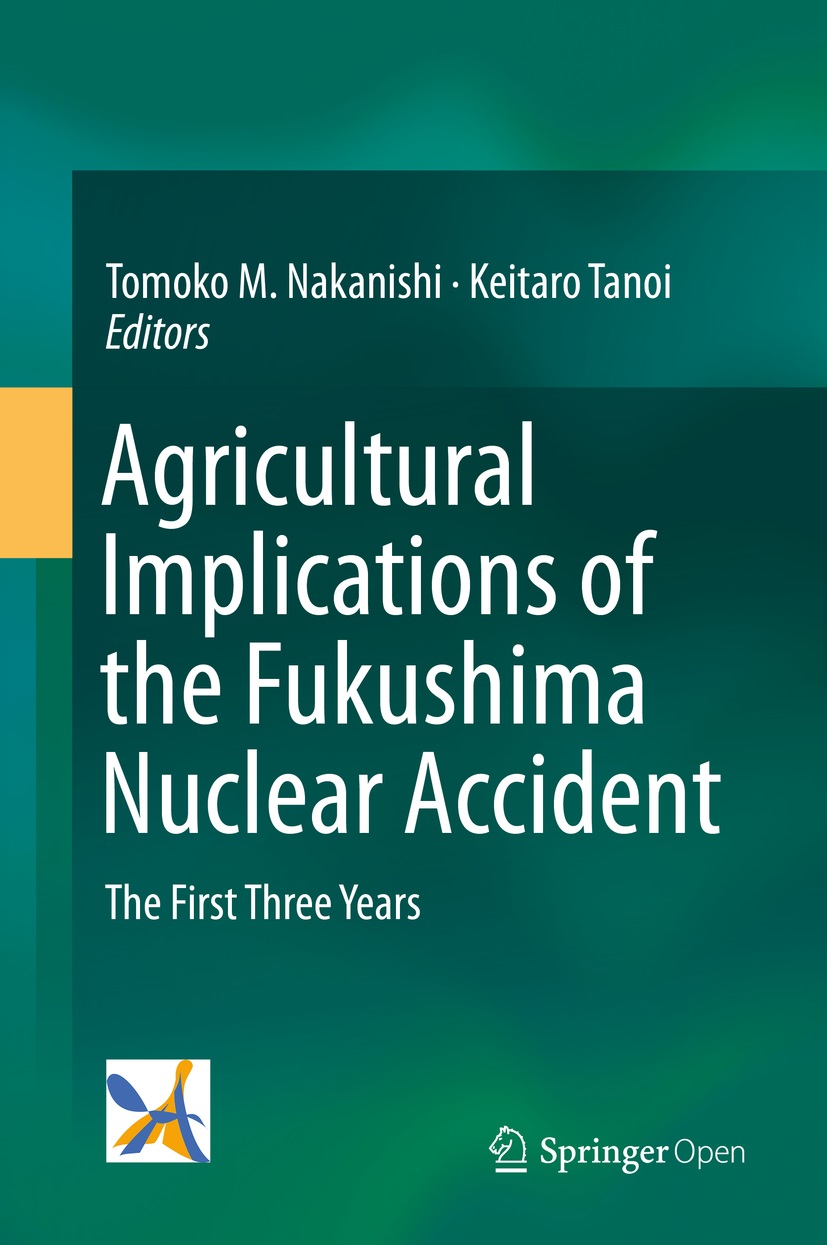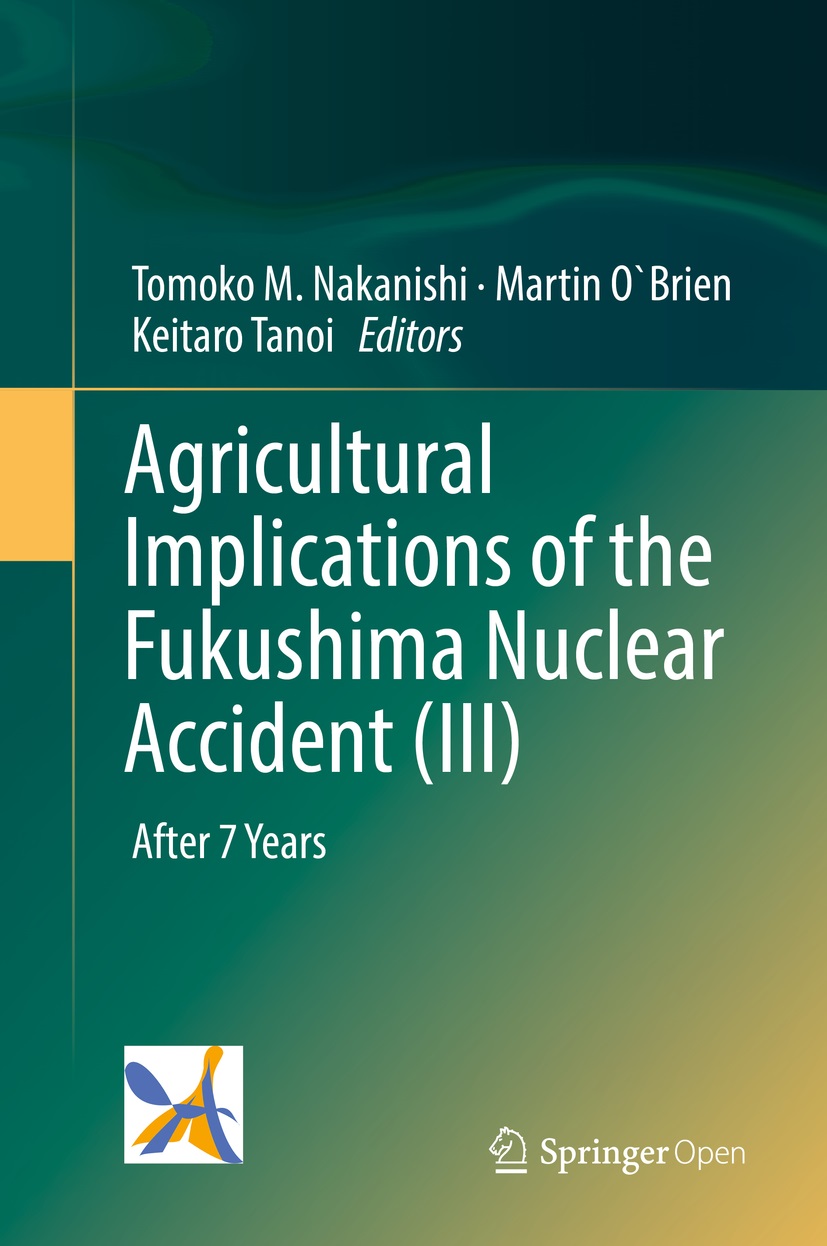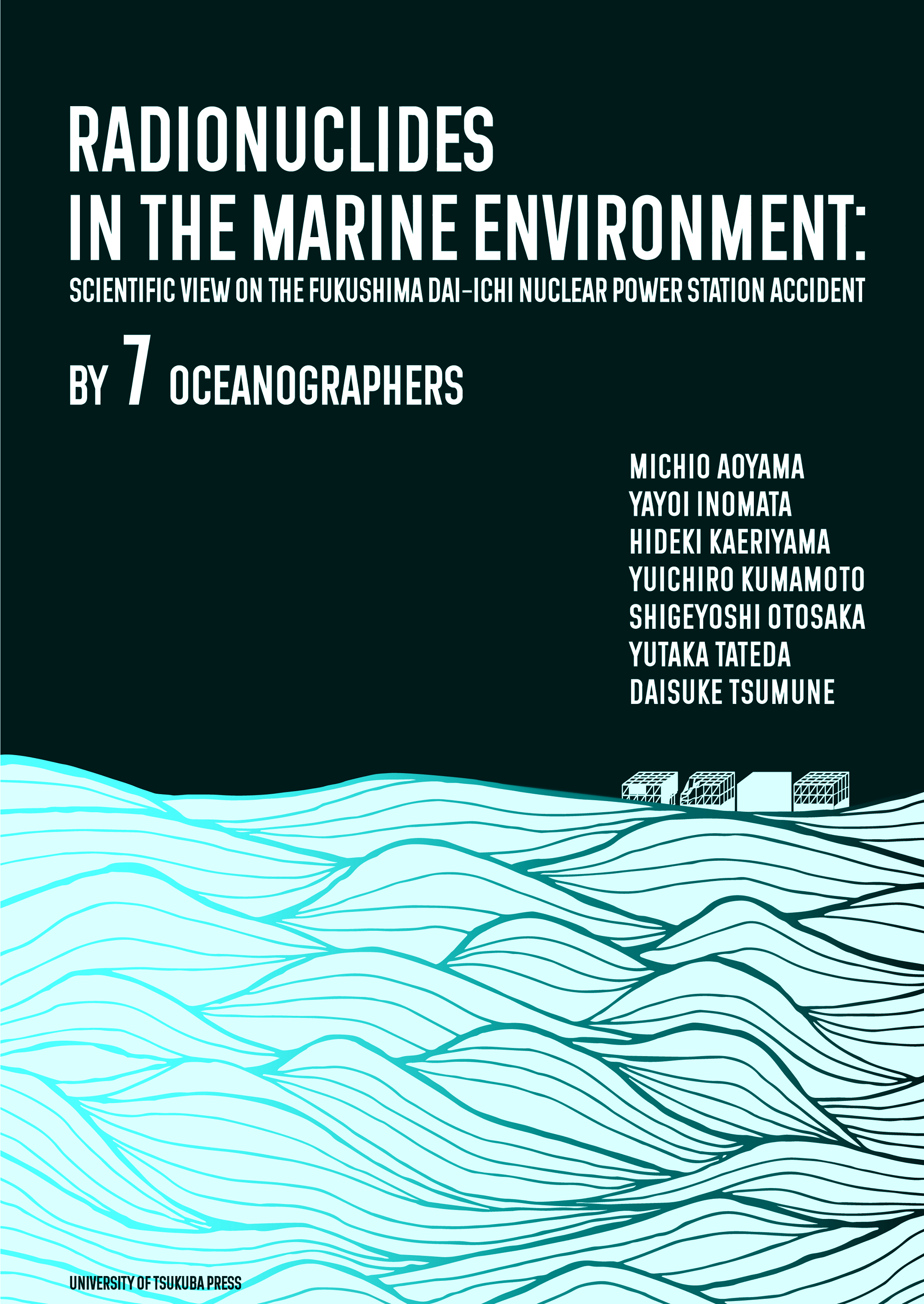
書籍名
Agricultural Implications of the Fukushima Nuclear Accident The First Three Years
判型など
263ページ、ハードカバー
言語
英語
発行年月日
2016年
ISBN コード
978-4-431-55826-2
出版社
Springer Japan
出版社URL
英語版ページ指定
2011年3月11日の大地震による東京電力福島第一原子力発電所事故により大量の放射性物質が環境中に放出されました。その放射性物質が沈着した場の多くは、我々の食を支えている農業・水産業・畜産業・林業の場でした。東京大学大学院農学生命科学研究科では、多くの教員・学生が被災地に入り、調査・研究を進めてきました。「Agricultural Implications of the Fukushima Nuclear Accident」シリーズでは、これらの活動を中心に現場でのデータを取りまとめ広く世界に発信する目的で編纂され、無料でダウンロードできるようにしたものです。事故から1年半の間の出来事をまとめたシリーズ1冊目 (2013年, https://link.springer.com/book/10.1007/978-4-431-54328-2) は、2019年8月現在、13万5千回以上、ダウンロードされており、広く世界中で読まれています。そして今回紹介する本は、事故後3年目までをまとめたシリーズ2冊目 (2016年) です。
2019年現在、我々が国内にて普段生活する中で食品中に放射性セシウムが混入している懸念を持って生活している人は、いまではほとんどいないかと思います。食の安全がどのように担保されてきたのか、農業環境でどのような取り組みが為されてきたのかを知るための一歩として、本書を気軽に手に取っていただきたいと思います。
具体的に記載されていることを列挙しますと、福島県で行われている農産物中の放射能検査について検査サンプル数や放射能レベルの詳細なデータ、福島県で行われているお米の検査とその結果、福島県内の水田においてさまざまなイネ品種を育てた場合や肥料を変えた場合のイネ中放射性セシウム濃度、カリウム肥料を与えた場合にイネが放射性セシウムを吸収する量が低減することや吸収された放射性セシウムが玄米に移行する割合が低減すること、福島県飯舘村の水田において地元住民とNPO団体がイネを試験栽培した貴重な取り組みの結果、福島県内の牧場の食用の羊において放射能汚染のないエサを食べさせることで安全な食用肉として出荷できることを示すデータ、放射能汚染されてしまった堆肥で育てた野菜を調べた結果、野生イノシシの臓器別放射性セシウム濃度、放射線レベルと野生の鳥の活動についての調査結果、果樹における放射性セシウムの移行、シイタケを作るための原木の生産を念頭にした樹木への放射性セシウムの移行と将来的な展望、スギやマツの樹木のどの部位の放射性セシウムが蓄積しているのかを可視化して解析した結果、森林生態系における放射性セシウムの循環、農村環境の放射線レベル低下を目指した水田での水張りについて、被災地住民とNPOの協働、福島沖の水産業について解説と試験操業について、放射能汚染や福島県産物に対する消費者の心理に関する調査研究、放射性セシウムや放射性カリウムを可視化する最新の技術の紹介、といったトピックが並んでいます。
こうした結果は、国内に留まらず海外の方にも知っていただきたい情報です。全て英語で記載されていますが、図表が多いので、日本の学生もあまり苦にせず読むことができるでしょう。無料のpdfで入手可能ですので、気になる図表だけ見るのもよいでしょう。
(紹介文執筆者: 農学生命科学研究科・農学部 教授 田野井 慶太朗 / 2019)
本の目次
Tomoko M. Nakanishi
2. Monitoring Inspection for Radioactive Substances in Agricultural, Livestock, Forest and Fishery Products in Fukushima Prefecture
Naoto Nihei
3. Rice Inspections in Fukushima Prefecture
Naoto Nihei
4. Cesium Accumulation in Paddy Field Rice Grown in Fukushima from 2011 to 2013: Cultivars and Fertilization
Yoshihiro Ohmori, Nobuhiro Tanaka, and Toru Fujiwara
5. Physiological Verification of the Effect of Potassium Supply on the Reduction of Radiocesium Content in Rice Grain
Natsuko I. Kobayashi
6. Consecutive Field Trials of Rice Cultivation in Partially Decontaminated Paddy Fields to Reduce Radiocesium Absorption in the Iitate Village in Fukushima Prefecture
Ichio Ii and, Keitaro Tanoi
7. Effects of “Clean Feeding” Management on Livestock Products Contaminated with Radioactive Cesium Due to the Fukushima Daiichi Nuclear Power Plant Accident
Noboru Manabe, Tomotsugu Takahashi, Maiko Endo, Chunxiang Piao, Junyou Li, Hiroshi Kokado, Minoru Ohta, Keitaro Tanoi, and Tomoko M. Nakanishi
8. Adverse Effects of Radiocesium on the Promotion of Sustainable Circular Agriculture Including Livestock Due to the Fukushima Daiichi Nuclear Power Plant Accident
Noboru Manabe, Tomotsugu Takahashi, Chunxiang Piao, Junyou Li, Keitaro Tanoi, and Tomoko M. Nakanishi
9. Wild Boars in Fukushima After the Nuclear Power Plant Accident: Distribution of Radiocesium
Keitaro Tanoi
10. Contamination of Wild Animals: Microhabitat Heterogeneity and Ecological Factors of Radioactive Cesium Exposure in Fukushima
Ken Ishida
11. Translocation of Radiocesium in Fruit Trees
Daisuke Takata
12. The Effects of Radioactive Contamination on the Forestry Industry and Commercial Mushroom-Log Production in Fukushima, Japan
Satoru Miura
13. Radiocesium in Timber of Japanese Cedar and Japanese Red Pine, in the Forests of Minamisoma, Fukushima
Masaya Masumori, Norio Nogawa, Shin Sugiura, and Takeshi Tange
14. Ecosystem Monitoring of Radiocesium Redistribution Dynamics in a Forested Catchment in Fukushima After the Nuclear Power Plant Accident in March 2011
Nobuhito Ohte, Masashi Murakami, Izuki Endo, Mizue Ohashi, Kohei Iseda, Takahiro Suzuki, Tomoki Oda, Norifumi Hotta, Keitaro Tanoi, Natsuko I. Kobayashi, and Nobuyoshi Ishii
15. Reduction of Air Radiation Dose by Ponding Paddy Fields
Naritaka Kubo, Toshiaki Iida, and Masaru Mizoguchi
16. Collaboration Structure for the Resurrection of Iitate Village, Fukushima: A Case Study of a Nonprofitable Organization
Hanae Yokokawa and Masaru Mizoguchi
17. Impacts of the Nuclear Power Plant Accident and the Start of Trial Operations in Fukushima Fisheries
Nobuyuki Yagi
18. Consumer Evaluation of Foods from the Disaster Affected Area: Change in 3 Years
Hiromi Hosono, Yuko Kumagai, Mami Iwabuchi, and Tsutomu Sekizaki
19. Imaging Techniques for Radiocesium in Soil and Plants
Ryohei Sugita, Atsushi Hirose, Natsuko I. Kobayashi, Keitaro Tanoi, and Tomoko M. Nakanishi
関連情報
https://www.a.u-tokyo.ac.jp/rpjt/
関連記事:
福島の農業の再生に向けて/田野井慶太朗(東京大学大学院農学生命科学研究科教授) (『原子力文化』 2019年3月号)
https://www.jaero.or.jp/interview/48_index_detail.php



 書籍検索
書籍検索


 eBook
eBook


